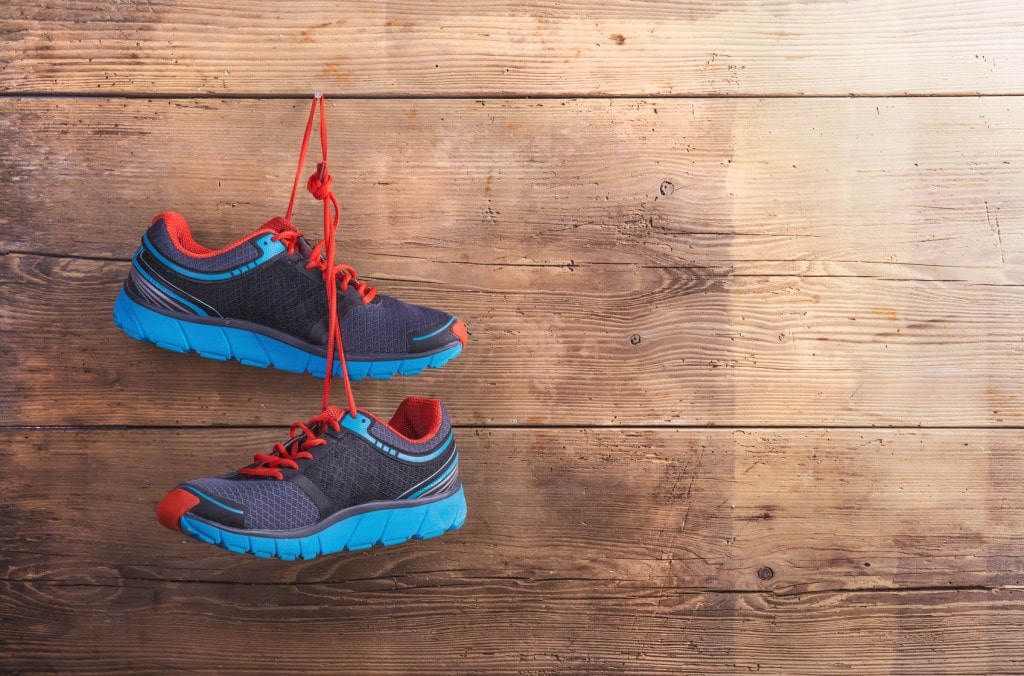Ever wondered if your core muscles have a secret life beyond those occasional planks and crunches? Well, if you’re a runner, you’re in for a surprise. Your core muscles are key for your running game, and it’s time they get the recognition they deserve.
In today’s post, we’re going to uncover why your core is your best running buddy. We’ll dig into the nitty-gritty of core anatomy, explore its role in boosting your performance, highlight the pitfalls of a weak core, and arm you with tips to keep your core game strong.
Sounds like a great idea?
Then let’s get started.
Anatomy of the Core Muscles
Let’s take a closer look at the anatomy of your core muscles – the key players that keep you upright and balanced while you conquer those miles.
- Rectus Abdominis: You might know these as the “six-pack” muscles. They run down the front of your abdomen and are responsible for flexing your lumbar spine – think crunches. When you’re running, they play a crucial role in keeping you upright and stable.
- Obliques: Found on the sides of your abdomen, obliques come in both internal and external varieties. They’re all about those rotational movements and side-bending of your spine. When you’re navigating turns or uneven terrain during a run, your obliques are hard at work, ensuring your pelvis and spine stay steady.
- Lower Back Muscles: These include the erector spinae and multifidus, and they’re all about extending and stabilizing your spine. They’re your body’s shock absorbers, distributing those impact forces that travel up your spine as you run.
- Transverse Abdominis: The deepest layer of abdominal muscles, these guys wrap horizontally around your torso like a corset. They provide stability to your pelvis and spine by increasing intra-abdominal pressure.
Role of Core Muscles in Running
Now, let’s get into why these core muscles are so important for runners.
Think of your core muscles as a team of essential players, each with a specific role in ensuring your running performance is top-notch.
From the abdominal muscles to the pelvic floor, they work together to support your every stride.
But this isn’t just about looks; it’s about optimizing your running efficiency and minimizing the risk of injuries. Scientific studies published in reputable journals, like Medicine & Science in Sports & Exercise, have highlighted the significance of core strength for runners.
Let’s break down their contributions even further:
- Energy Transfer: Your core muscles act as a central hub for transferring energy between your upper and lower body. A strong core ensures efficient energy transfer, helping you conserve energy and run more effectively.
- Limb Movement: Core stability is essential for controlling your leg and arm movements, ensuring smooth and coordinated strides, which is crucial for maintaining your rhythm and pace.
- Posture: A strong core helps you maintain an upright posture while running, allowing for optimal lung capacity and reducing strain on your neck and shoulders.
- Efficiency: Core stability minimizes unnecessary side-to-side movements, leading to a more efficient running motion. Efficiency is particularly important during long-distance runs when conserving energy is key.
- Pelvic Stability: Core muscles play a significant role in stabilizing the pelvis during foot impact, which is vital for aligning the lower extremities and preventing injuries like IT band syndrome or runner’s knee.
- Spinal Alignment and Shock Absorption: Running involves repetitive impact, and a strong core helps maintain spinal alignment and absorbs some of the shock, reducing the risk of lower back pain.
I remember a time when I underestimated the importance of core strength. During a particularly grueling trail race, my lower back started to ache very badly. This also took a toll on my running form as I started flailing around. Please don’t my mistake. Never underestimate the important of a strong core for a successful and pain-free running experience.
Here’s how to refine your abs by running.
Downside of Weakness Of The Core In Runners
Here’s the truth. Without a strong core, your running journey could be fraught with challenges and setbacks.
And please don’t take my word for it.
Research published in renowned journals like the Journal of Orthopedic & Sports Physical Therapy has highlighted the critical role of core strength in running performance and injury prevention. These studies have shown that runners with weak cores experience compromised stability, reduced efficiency, and an increased likelihood of injuries, such as lower back pain, hip issues, and even strains in other muscle groups.
Imagine running with a weak core as trying to navigate treacherous terrain without a reliable compass. Your body lacks the stability and control needed to maintain optimal form and transfer energy efficiently.
Common Core Weaknesses in Runners
If you’re a runner, then you likely suffering from specific core weaknesses that affect your form and injury risk. Here are the most common ones.
- Weak Lower Back: Many runners have underdeveloped lower back muscles, leading to poor posture.
- Imbalanced Abdominals: Strong obliques but weak rectus abdominis and transverse abdominis can affect stability.
- Weak Hip Flexors: Hip flexor weakness can impact stride length and efficiency.
- Glute Strength: Weak glutes can contribute to core instability, affecting pelvis stability.
Tips to Keep Your Core Game Strong
Now that you’re convinced of the core’s significance, it’s time to strengthen these vital players. Here are a few exercises that have worked wonders for me:
- Planks: Holding a straight body position on your forearms or hands engages multiple core muscles simultaneously, building endurance and stability. I make it a point to include planks in my routine regularly.
- Russian Twists: This exercise adds a twist (pun intended) to your core training, working your obliques and promoting rotational strength. It’s a great way to prepare your core for those unexpected twists and turns on the running trail.
- Crunches: The classic core exercise targets your rectus abdominis and brings the burn to your midsection. It’s an excellent choice for building that coveted “six-pack.”
- Kettlebell Swings: For those looking to add some firepower to their core routine, kettlebell swings offer a dynamic and explosive movement that activates your core muscles while also incorporating full-body engagement.
- Pilates: If you’re seeking a holistic approach to core strength, Pilates can be a game-changer. Its focus on controlled movements and core activation aligns perfectly with the needs of a runner.
Conclusion
Your core muscles are the unsung heroes of your running journey. They provide stability, enhance efficiency, and protect you from injuries. Neglecting them can lead to compromised performance and discomfort.
So, the next time you lace up your running shoes, remember that your core is your secret weapon for success on the trails. Incorporate core-strengthening exercises into your routine, and you’ll experience the difference in your running form and endurance. Here’s to strong cores and powerful runs!



